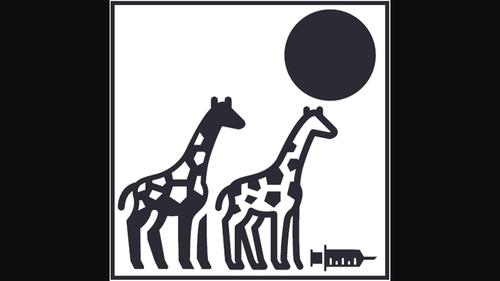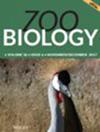经过自愿颈静脉抽血训练的成年长颈鹿的静脉血气和乳酸值
IF 1.2
4区 生物学
Q3 VETERINARY SCIENCES
引用次数: 0
摘要
以前曾对麻醉状态下和在滑槽中受到物理约束的长颈鹿进行过血气分析;但是,以前没有描述过经过训练可以在没有化学或物理约束的情况下参与静脉穿刺的长颈鹿的参考值。通过使用护理点血气和乳酸分析仪以及 20 只经过自愿抽血训练的长颈鹿,确定了静脉血气和血浆乳酸浓度的数值。静脉血 pH 值(7.34-7.46)、二氧化碳分压(PCO2;28.5-37.8 mmHg)、氧分压(PO2;56-102 mmHg)、碳酸氢盐(HCO3-;18.9-21.0毫摩尔/升)、碱过量(BE;-6.0至-3.6毫摩尔/升)、总二氧化碳(TCO2;19.9-22.0毫摩尔/升)和乳酸(0.32-0.56毫摩尔/升)。这是首次报道长颈鹿在没有化学或物理约束的情况下的静脉血气分析值。这些数据将为长颈鹿静脉血气和乳酸值的临床解释提供参考,并证明了训练长颈鹿和其他动物园物种进行自愿医疗程序的一些潜在诊断益处。本文章由计算机程序翻译,如有差异,请以英文原文为准。

Venous blood gas and lactate values in adult giraffe trained for voluntary jugular phlebotomy
Blood gas analyses have previously been performed for giraffe under anesthesia and with physical restraint in a chute; however, reference values for giraffe that are trained to participate in venipuncture without chemical or physical restraint have not previously been described. Using a point‐of‐care blood gas and lactate analyzer and 20 giraffe trained for voluntary phlebotomy, values were determined for venous blood gasses and plasma lactate concentration. Ninety‐five percent confidence in the mean values for venous pH (7.34–7.46), partial pressure of carbon dioxide (PCO2 ; 28.5–37.8 mmHg), partial pressure of oxygen (PO2 ; 56–102 mmHg), bicarbonate (HCO3 − ; 18.9–21.0 mmol/L), base excess (BE; −6.0 to −3.6 mmol/L), total carbon dioxide (TCO2 ; 19.9–22.0 mmol/L), and lactate (0.32–0.56 mmol/L) were calculated. This is the first report on venous blood gas analysis values for giraffe without chemical or physical restraint. These data will provide a reference for clinical interpretation of venous blood gas and lactate values in giraffe and demonstrate some of the potential diagnostic benefits to training giraffe and other zoo species for voluntary medical procedures.
求助全文
通过发布文献求助,成功后即可免费获取论文全文。
去求助
来源期刊

Zoo Biology
生物-动物学
CiteScore
2.50
自引率
15.40%
发文量
85
审稿时长
6-12 weeks
期刊介绍:
Zoo Biology is concerned with reproduction, demographics, genetics, behavior, medicine, husbandry, nutrition, conservation and all empirical aspects of the exhibition and maintenance of wild animals in wildlife parks, zoos, and aquariums. This diverse journal offers a forum for effectively communicating scientific findings, original ideas, and critical thinking related to the role of wildlife collections and their unique contribution to conservation.
 求助内容:
求助内容: 应助结果提醒方式:
应助结果提醒方式:


